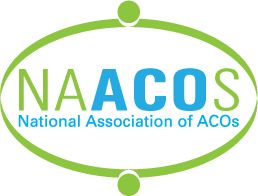
Contributor: COVID-19’s Impact on ACO REACH Deserves CMS' Attention

CMS must account for inclusion of COVID years in 2023 ACO REACH benchmarks to avoid unfairly penalizing REACH ACOs.
This was originally
Highlights:
- CMS will factor years affected by the COVID-19 pandemic into ACO REACH’s financial benchmarks, creating unfair performance standards because of data anomalies.
- The current ACO REACH rate book will create arbitrary winners and losers based on vast regional variation in Medicare spending that was exacerbated by the pandemic.
- CMS should consider approaches to mitigate the potential negative impacts.
Comprised of 132 accountable care organizations (ACOs) and caring for 2.1 million beneficiaries, the
Specifically, CMS will factor years affected by the COVID-19 pandemic into REACH ACOs’ financial benchmarks, creating unfair performance standards for ACOs because of data anomalies. The pandemic caused preventive, routine care to be missed in 2020 and delayed elective surgeries, and not all of that care was made up for in 2021. Furthermore, there were dramatic variations in spending across the country due to some regions more quickly lifting stay-at-home orders and deferring elective procedures.
How are ACO REACH benchmarks determined?
The
REACH’s benchmarks in 2023 are made up of 60% of the historical spending of the ACO’s assigned patients and 40% regional expenditures, defined by counties from which the ACO draws patients and determined by the rate book
What is happening?
In short, there is large variation in regional trends between the 2022 rate book and the 2023 rate book due the inclusion of 2020 and 2021. For example, an average-risk beneficiary in Maine would receive a 1% reduction in its regional rate using the 2023 rate book compared with the 2022 rate book. Contrast this with an average-risk beneficiary in Washington, D.C., that would receive an 11% increase in its regional rate in 2023 compared with 2022. Puerto Rico (–2%) and Maine (–1%) would see the smallest year-over-year change, while D.C. (11%), New York (7%), and California (6%) would see the largest increases.
In the case of Maine, a –1% regional trend for 2023 is most useful when you compare it to the national average for the same time period, which was +4%. This means an average beneficiary in Maine became 5% less expensive relative to an average beneficiary in the United States from 2022 to 2023 and the ACO faces a 5% headwind using the 2023 rate book. This is problematic when you consider that regional health care expenditures in 2020 and 2021 were likely influenced by state and local COVID-19 restrictions and cultural norms instead of by structural changes in the way care is delivered in these markets.
What are the implications?
The current REACH rate book will create arbitrary winners and losers based on vast regional variation in Medicare spending that was exacerbated by the pandemic. Some ACOs will see lower benchmarks in 2023 because of CMS’s including pandemic-stricken years. Let’s say, the Maine ACO sees a 2% decrease in its benchmark. This could make participation untenable when considering CMS keeps the first 3% of savings for itself. The Maine ACO would have to generate 5% in savings to collect any reward for its participation. ACOs in the model collectively generated 3.3% in savings in 2021, the only year for which data are available.
Additionally, decreased savings reduces the opportunity for ACOs to reinvest earned shared savings back into patient care through care coordinators, quality improvement efforts, enhanced health information technology, home visits, and other programs that help provider better care at lower costs.
Policy Considerations
CMS should consider approaches to mitigate the potential negative impacts, such as:
- Limit losses for entities with negative rate book impacts if COVID-19 years are present.
- Introduce a rate book corridor, so trends could only increase or decrease by a limited percentage.
- Expand number of years, such as the 5 employed by Medicare Advantage, or only include one COVID-19 year.
- Release rate book in advance and allow for stakeholder feedback via a comment period prior to finalizing as is also done in Medicare Advantage.
Newsletter
Stay ahead of policy, cost, and value—subscribe to AJMC for expert insights at the intersection of clinical care and health economics.









































